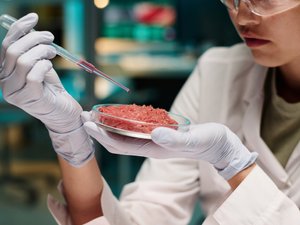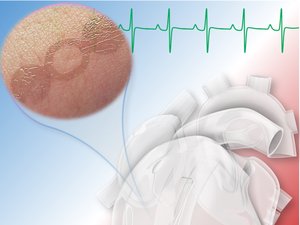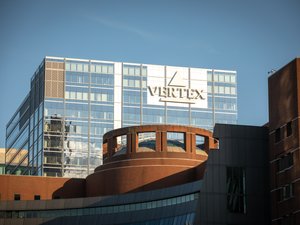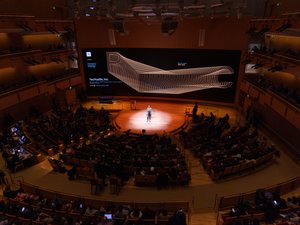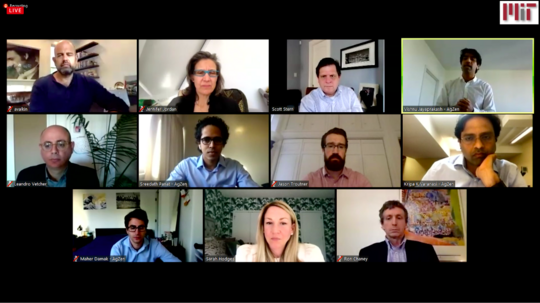
The MIT $100K Challenge has been around for 31 years, but this year's pitch night was historic. Instead of a live audience, pre-recorded applause tracks were played. Instead of a band, drumroll tracks served to build anticipation before the night's winners were announced.
In short, the evening was held virtually. About 2,000 people tuned in to watch eight startups pitch their business ideas in a Zoom meeting livestreamed on MIT's website. Those finalists had made it to this last round after going through two earlier phases, "Pitch" and "Accelerate."
From the final round, which MIT $100K called "Launch," only two startups would emerge victorious.
"We all know the creativity, discipline and hard work required to make it to this stage," Scott Stern, the David Sarnoff Professor of Management at the MIT Sloan School of Management, said during the livestream.
The evening was broken down into three parts. The startups—each of which had at least one current MIT student on its team—would have about five minutes each to pitch. After that, a panel of judges had up to seven minutes to pepper the founders with questions about their business models, the market hurdles they intended to overcome and more.
The judges took about 20 minutes to deliberate while Anne Wojcicki, the founder and CEO of genetics testing company 23andMe, joined for a keynote fireside chat.
It was nearly 9 p.m. by the time the two winners were announced.
In second place, taking home $50,000, was AgZen, a startup designed to reduce pesticide use by making pesticide spraying more efficient.
And in first place, taking home the Robert P. Goldberg grand prize of $100,000, was Ocular Technologies. The health tech startup is developing a hardware-enabled, machine learning-powered telemedicine platform. Ocular Technologies previously participated in the MIT delta v accelerator; when it graduated from that program in September, we described its flagship product as "what looks like a VR headset but is actually a device that can photograph patients’ eyes so they can get remote optometric care on demand."
"We're going to help a lot of people," co-founder and CEO Brett Sternfield said as his team accepted the award. The company previously partnered with the New England College of Optometry and Mass. Eye and Ear.
You can read about all eight finalists in the MIT $100K Challenge below. Descriptions provided by MIT.
AgZen: Only 2 percent of sprayed pesticide reaches its target (plant surfaces). This inefficiency forces over-spraying and results in the pollution of soil, water sources and the atmosphere. This contamination leads to 200,000 deaths per year and illnesses including cancer and neurological disorders. Pesticides have a market size of $60 billion globally and $15 billion in the U.S. Our field-tested spray and formulation technology allows us to reduce pesticide usage by 50 percent. Based on our business model, the TAM is $7.5 billion.
GC Therapeutics: GC Therapeutics is developing the next generation of cell therapies (a market worth $55 billion by 2024). We use synthetic biology to program patient-derived stem cells into any differentiated cell-type with best-in-class efficiency (10x), speed (100x) and scalability. Leveraging this breakthrough process, our team can program additional cellular features and go beyond simply replacing damaged cells, thereby introducing the new concept of “SuperCell™ Therapy” to allow the tailoring of cells to specific clinical indications.
Harmony Desal: $30 billion will be invested in seawater desalination over the next 5 years. The dominant technology in desalination today is Reverse Osmosis (RO). While RO is trusted and proven, it is also energy intensive. Our technology, batch RO, is the most energy-efficient RO configuration. In batch RO, a time-varying pressure tracks the osmotic pressure to increase water recovery while consuming less energy. Batch RO has been proven at the bench-scale (TRL: 4.5) and is ready to get out of the lab and into the market.
Hikma Health: We believe that every patient deserves personalized care, no matter where they are. To achieve this vision, we create customized health data systems to improve outcomes for patients, and deploy these systems in partnership with NGOs providing free healthcare to vulnerable populations. We launched with the support of the MIT Media Lab Refugee Learning Accelerator, and are growing driven by our vision to empower our patients and physicians with Hikma – healing wisdom.
Le Qara: Le Qara means leather in “quechua” (Inca’s native language). Le Qara is a biotech company born to give a solution to the problems in the leather industry. Le Qara is a new vegan bioleather. It’s made by microorganisms using biotechnology, so it does not come from animal slaughter. It’s 100 percent eco-friendly and biodegradable; we don’t use any toxic chemicals in our process, and our microorganisms are fed with residues from plants and fruits. Our vegan bioleather can replicate any type of leather because we can bioengineer it by changing its texture, thickness and flexibility.
Ocular Technologies: 220 million people worldwide suffer from preventable or treatable blindness, yet are unable to access eye care due to the limited supply of eye specialists and the distance between patients and eye doctors. Ocular Technologies is developing a hardware-enabled telemedicine platform powered by machine learning algorithms. Our solution transforms patient access to high quality eye care by capturing high magnification videos of anterior segment exams and enabling ophthalmologists to make a diagnosis remotely.
Spatio Metrics: At Spatio Metrics, we’re working towards a future in which every building makes us healthier. Our B2B analytics software helps architects and their clients bridge the gap between design, data and performance. Our first product helps health care architects quantify the human and financial impact of design by analyzing hospital floor plans to reveal how facility design choices can improve quality of care, operational efficiency and wellbeing. Our structured datasets, detailed floor plan visualizations and holistic scorecards support architects and their clients during the design process to save time, save money and save lives.
Thiozen: Hydrogen produced by fossil fuel reforming (96 percent total production) contributes to 2.3 percent of global warming emissions. We invented a patented process to generate hydrogen that is 20 percent less expensive and 75 percent less carbon-intensive than current methods used in oil and gas. As an illustration, our process would save the average US refinery $9.6 million each year and avoid 60,000 tons of CO2 emissions, roughly 20 percent of a refinery's annual carbon footprint.
